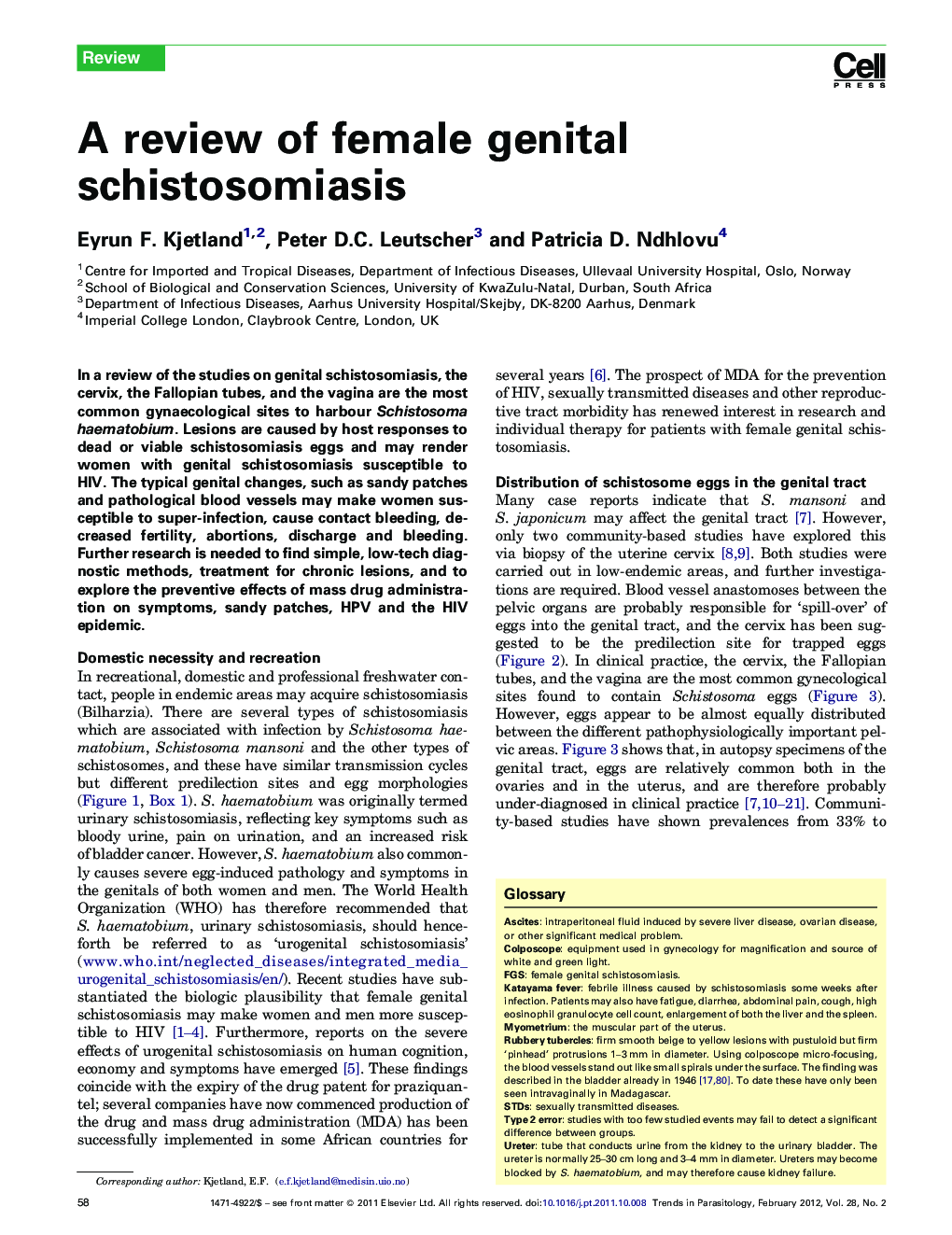| Article ID | Journal | Published Year | Pages | File Type |
|---|---|---|---|---|
| 3423265 | Trends in Parasitology | 2012 | 8 Pages |
In a review of the studies on genital schistosomiasis, the cervix, the Fallopian tubes, and the vagina are the most common gynaecological sites to harbour Schistosoma haematobium. Lesions are caused by host responses to dead or viable schistosomiasis eggs and may render women with genital schistosomiasis susceptible to HIV. The typical genital changes, such as sandy patches and pathological blood vessels may make women susceptible to super-infection, cause contact bleeding, decreased fertility, abortions, discharge and bleeding. Further research is needed to find simple, low-tech diagnostic methods, treatment for chronic lesions, and to explore the preventive effects of mass drug administration on symptoms, sandy patches, HPV and the HIV epidemic.
